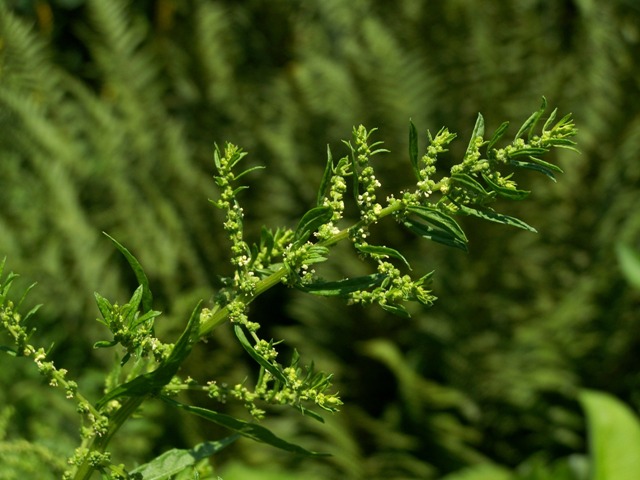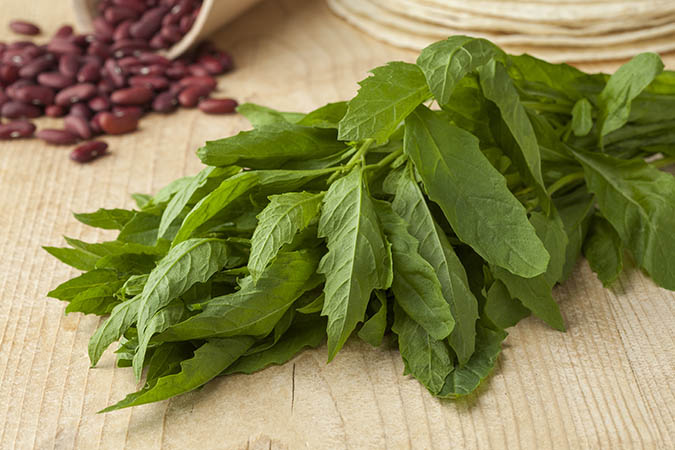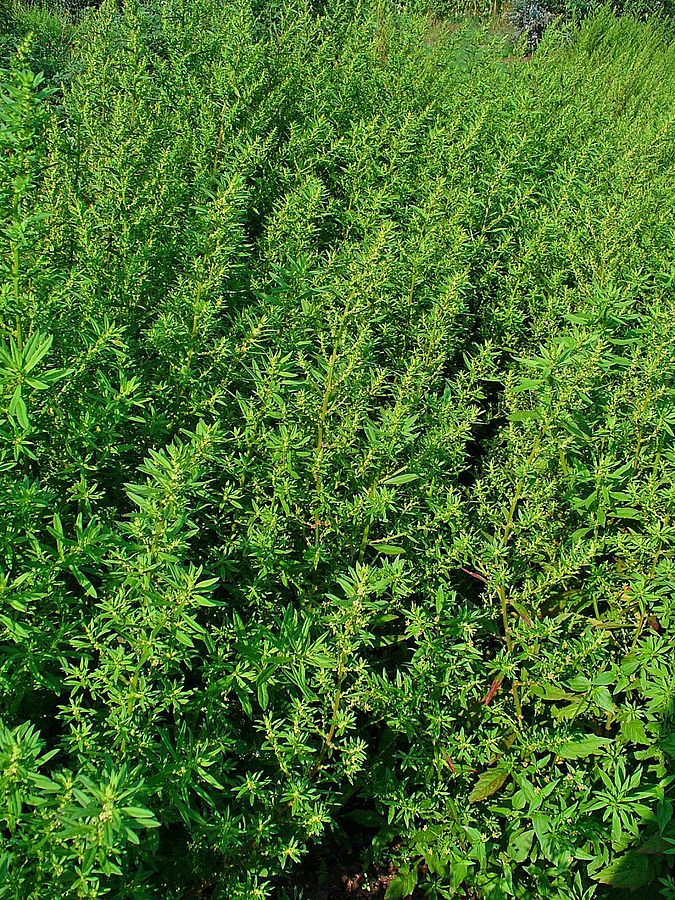When paired with beans, epazote is an excellent carminative, providing herbal gas relief. Learn more about this natural remedy for gas.
Herbal Gas Relief: The Mayan Remedy
If you’ve been gardening for a while, there’s a really good chance that you eat a lot of beans. They’re super easy to grow, they’re one of the easiest plants to grow from seed, and they store well. A gardener’s dream!
But if you’re someone who is prone to gas after eating beans, then that gardener’s dream can take a nightmarish turn… You might call beans “a blessing and a curse.”
You May Also Enjoy:
“How to Use 50 lbs of Dry Storage Beans Fast”
“How to Make Your Own Tinctures, Salves, and Essential Oils”
“Equisetum Hyemale (Horsetail): The BEST Plant for Tooth Health + 8 More Benefits!”
Epazote: A Mayan Miracle Herb for Gas Relief

Image by Andreina Nacca from Pixabay
Epazote (Dysphania ambrosioides)—also known as Jesuit’s tea, Mexican tea, paico, and wormseed—is a plant with a long and fascinating history. It was grown by the Mayans, the Incas, and the Aztecs—and it is still used to flavor many traditional dishes in Central America, South America, the Caribbean, and Mexico, where it is known as hierba de Santa María.
It is used widely as both a culinary and a medicinal herb. Epazote is used to cure people and animals suffering from parasitic worms like roundworms, hookworms, and tapeworms. Because of its effectiveness in controlling worms, it is often added directly to animal feed.
You May Also Enjoy:
“15 Wild Foods That Will Keep You Alive In An Emergency”
A less openly discussed use for epazote is as a “carminative,” which means it relieves gas. This effect is likely why the herb has been used for thousands of years to flavor beans. Hippocrates said it best, “Let food be thy medicine…”
Native cultures in the Western hemisphere recognized that epazote lessened the discomfort of a bean-heavy diet, and started pairing this spice with beans thousands of years ago. People have described the taste of beans cooked with epazote as being “fuller and richer.” It’s a perfect pairing!
If you’re interested to learn more about epazote as a medicine or a spice, check out this fact sheet from the University of Arizona Cooperative Extension:
Download the original PDF Here: Epazote.pdf
A Word of Warning: Epazote Spreads!
Epazote is easy to grow from seed or cuttings. It prefers a sandy soil with lots of drainage, and it doesn’t respond well to sitting in moisture for too long. But as long as you don’t keep it too wet, epazote will thrive… and spread.
You May Also Enjoy:
“Hackberries: Nature’s Grape-Nuts for Winter Survival”
“Echolocation: My Secret Survival Skill”
“Sodium for Survival: 8 Ways to Find This Essential Nutrient in the Wilderness”
The inflorescence of epazote looks something like lamb’s quarter, with thousands of tiny green blooms clustered together. And the seeds of epazote are just as aggressive as lamb’s quarter, if not more so. Tiny, miniscule, black seeds—thousands of them.
Because of its love of dry conditions and its tendency to spread like crazy, epazote is a great candidate for growing outside your vegetable garden. Find a sunny spot with rocky or sandy soil, and give it a try in a place where you won’t mind if it takes over.
Special thanks to Kurt Nolte of the Yuma County Cooperative Extension, for compiling and sharing the helpful sheet about epazote.
Image credit (featured): By T.Voekler – Own work, CC BY-SA 3.0, https://commons.wikimedia.org/w/index.php?curid=4345903
Image credit (spreading): By H. Zell – Own work, CC BY-SA 3.0, https://commons.wikimedia.org/w/index.php?curid=9843502










COMMENTS(8)
We live in central Illinois where there are lots of Guatemalan immigrants, descendants of Mayans. They recognized epazote growing as a weed in our yard. It makes their day if they can pick some sprigs of epazote when they buy a live chicken. We don’t worry too much about it invading because it’s so heavily picked.
They also recognize and prize wormwood.
Is there a common name for epazote? We have no idea where it came from, just appeared here.
That’s a cool story – thanks for sharing it. Volunteer plants are my favorites – some of them seem to find the perfect place to pop up!
It helps when the beans are soaked overnight, with the soaking water thrown on the plants, as most people know, but it also helps to know that they are a member of the FODMAP family: fructo, oligo, di, mono, etc. which are like sponges: they absorb water like crazy, and if eaten with something sweet, ferment into alcohol. That’s where all the gas, distention, pain and embarrassing burps and farts come from. Rice and beans mixed with tea and sugar or honey is a recipe for gas! A bean burrito followed or accompanied by a sweet soda also is disastrous! Sugar and starch makes alcohol. Donuts frosted with sugar, apple pie, toast and jelly, cheerios and sugar, pasta and tomato sauce, orange juice and muffins, on and on…and then there’s the 10 o’clock blood sugar drop. Signal to stimulate again, and we’re on the road to addiction to the adrenaline high, without even tasting a drop of liquor!
It seems to me that I read somewhere that epazote is sometimes added to quacamole as an alternative to cilantro. and guacamole is commonly an accompaniment to beany mexican dishes so makes sense. I saw seeds being offered in U.S. catalogs a few years ago, but not recently. Haven’t tried it, but I do know that adding an extra amount of a vegetable oil like olive oil can help with digesting beans. Also adding miso, which is a delicious, flavor and digestion enhancing cultured food called miso. Though the best recognized forms of miso are soy based, there are some U.S. miso makers who offer traditionally cultured miso made WITHOUT soy. Both Great Eastern Sun and South River will mail order delectable and healthful varieties of organic miso with soy or without. Miso is cultured with rice inoculated with aspergillus oryzae. If you aren’t able to tote a tub of mixo around with you, the aspergillus is also available in a handy little squeeze bottle as a product called “Beano”.
There is an easier and more available gas “remedy” prevention. Soak the dried beans with several slices of fresh ginger root. When ready to cook toss that water and the ginger, then add a few slices in with the cooking beans. This prevents the gas formation.
Hello, Would likely try some epazote if I found it to see what taste it has, but doesn’t everyone know to add 1/4 tsp. ground ginger to a pound of dry beans they are cooking to avoid becoming known as Napoleion Blownaparte? The small amount of ginger is not noticeable in the beans, but the silence is wonderful!
I find that soaking the beans for 24 hours takes care of the problem.
Have heard of Epazote many times, it is sought out by locals here too (Central Texas).
Warnings are valid, as some people have died from overdoses of Epazote, or really the essential Ascaridole oil that varies like other plants in the Amaranth/Pigweed plant family. These oils vary from 16-70% in the plant and are variable depending on the nitrogen quantity they grow on. Pigweed, a different plant, was noted to do this on dairy runoffs too. Where the plants also accumulate too much nitrogen and can cause abortions/ uterine contractions and/or blue babies depending on the relative amount consumed and the gestation stage. This happens in humans and other livestock if the plant has consumed too much nitrogen. The Epazote plant also does this, as the Pigweed family, but produces an actual wormicide, that smells like turpentine. It is produced in unknown percentages in the plant, dependent on nitrogen fertilizer.
To avoid this, know where your plant was growing before harvest. And try to limit nitrogen, blood, or other fertilizers with the first number higher than 5 (I.e. 5-0-0, common in lawn feeds).
Check out the Epazote Wikipedia page, but look at the Ascaridole link on Wikipedia too. Chemists have been checking it out for a while (1903).